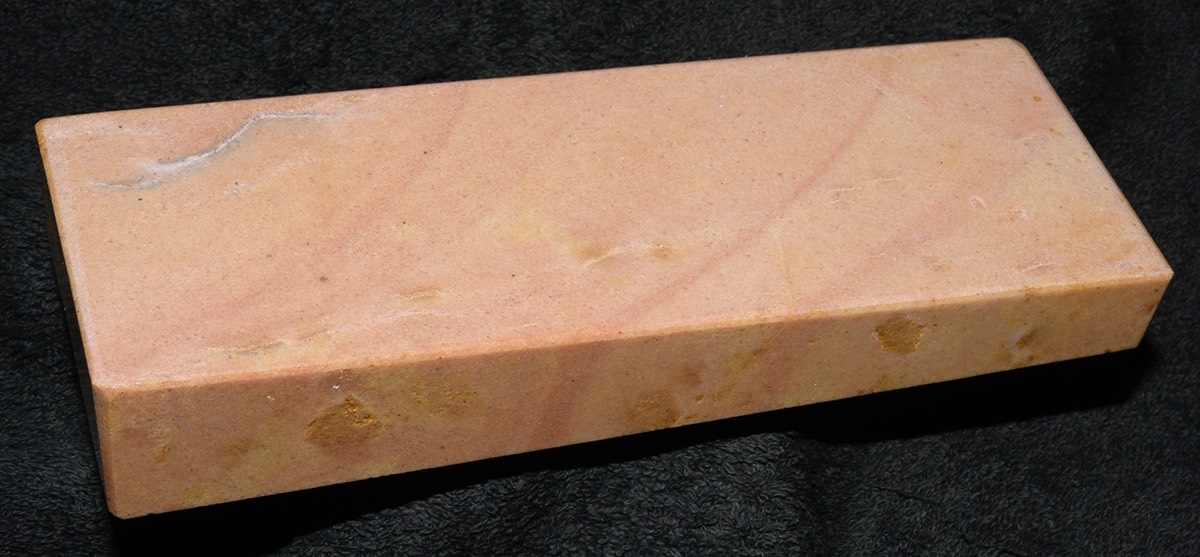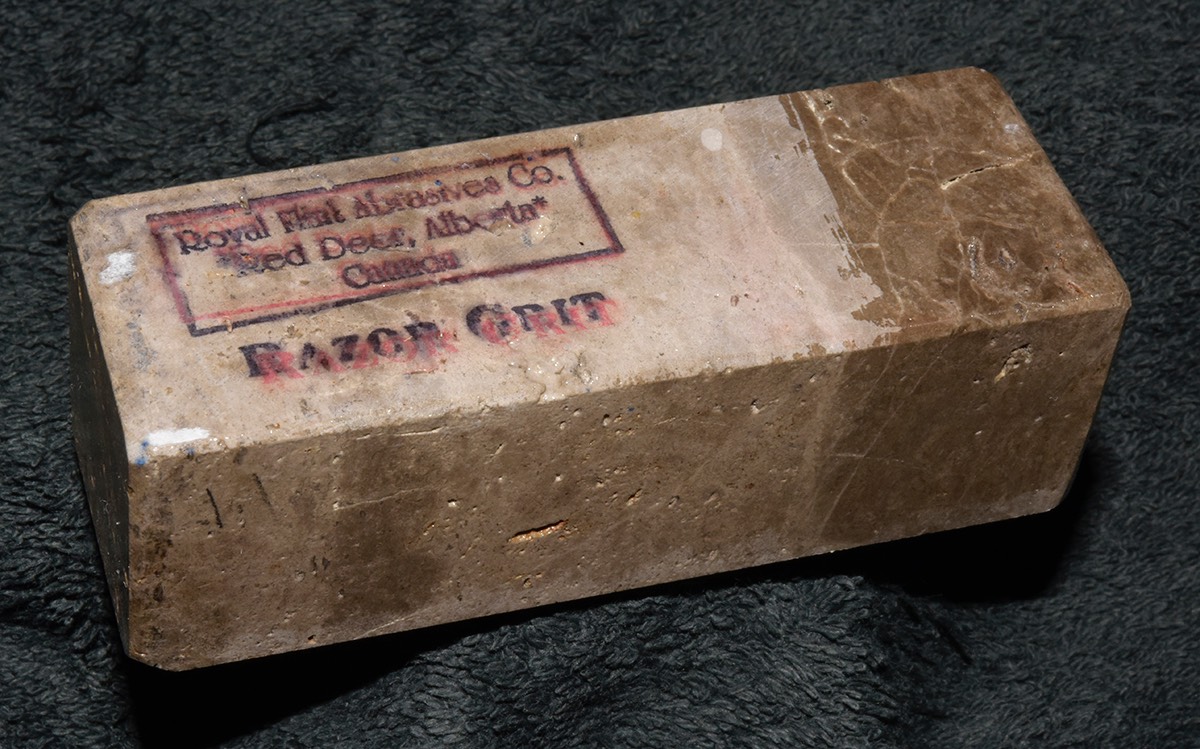
I did not feel that my 1st cycle of “Canadian Novaculite” hone tests were comprehensive. Originally, I wanted to test a ‘Premium Fine Grade’ stone but I was sent a Superior Fine Grade stone instead. I needed to try their top-dog stone, the PFG.
So, I purchased a Canadian hone stamped ‘Premium Fine Grade’. I also picked up a slurry stone that was stamped “Razor Grit”. Supposedly, it was going to produce extra fine slurry.
The shipping was not fast but not terribly slow. The stones were packed well, and they arrived in good condition. After extraction from the bomb-proof packaging, the hone appeared to have been lapped; but my straightedge told me it was not flat. Additionally, the working surface was not perfectly smooth; there were several glaring and easily-felt imperfections across the entire stone. The long edges seemed smooth, but magnification revealed that they needed to be chamfered and polished. The Razor Grit slurry stone was pitted, craggy and rough.
I sealed the manufacturer’s stamps with clear Krylon spray.
The Razor Grit slurry stone is fairly soft. When lapping, the particles felt like very fine and smooth like soft clay or mudstone. It is riddled with cavities and imperfections; I suspect that it would be prone to degradation, so I am going to seal the bottom and sides.
The PFG stone is harder than the Superior Fine Grade example I tested previously. To compare to an Arkansas stone, I would say it is notably less hard than a ‘true hard’ Ark. I am judging the hardness after lapping this stone 140x and 400x Atoma plates, and various grades of SIC powder. I have lapped about 50 Arks of all types this year, so I feel that my sample size and reference points for hardness levels are on point. If these Canadian stones do have a higher specific gravity than Arkansas stones, I’d suspect it is due to impurities like Hematite.
An acid test employing a 10% HCL solution produced an intense reaction from the Razor Grit slurry stone. The PFG stone did not react to the acid, but it does absorb water.
Honing on the PFG stone by itself proved to produce edges somilar edges than what the SFG stone offered. While the PFG is not the finest stone in the land, I was able to shave with the edges. The polish on the bevel was somewhat reflective but not ‘mirror’.
Where a typical Arkansas stone is comprised of cryptocrystalline and microcrystalline silica, the PFG stone shows a fair bit of macrocrystalline structure. Close inspection of the grains alludes to the crystalline structure being trigonal.
The Razor Grit slurry felt uneven and not uniform; one might say it’s lumpy. The polish it leaves is semi-reflective with visible erratic striations. This is a water-only slurry stone; oil caused the particles to clump and become inconsistent.
After testing on several different substrates, including inert surfaces, I found that the slurry from the razor grit nagura degrades a straight razor’s finished edge. The slurry does not seem to have any redeeming refinement qualities.
After several tests, I found that typical 8k edges were not improved with honing on the PFG stone. I find the PFG stone to be an interesting stone but not a recommended choice for honing straight razors. The edges were similar to what I experienced off the SFG stone, perhaps a bit better. Intermittently, I found rogue scratches that created issues that required a new bevel-set. Because this scenario was erratic, sometimes the edge/bevel were unscathed. I suspect that the surface imperfections in/on the PFG stone’s working surface interfere with honing. A finishing stone should not have inclusions, fissures and surface distractions.
Photo Section
1st, an overall Vew of the stone’s top, dry; sides and bottom are sealed.

Next, we have the Razor Grit slurry stone, dry but sealed.

Below, acid test of the Razor Grit slurry stone. The white oval in the lower right corner shows the bubbles that indicate the presence of Carbonate minerals in the stone.

These next e photos were taken using an LED flashlight for directional illumination, so the color is a bit off.
Next, we see a few fissures / vugs in the working surface of the hone. It also appears that the stone is, at least partially, macro crystalline.

Here is the largest inclusion in the stone’s honing surface

In this photo, the arrows are pointing out inclusions, fissures, and areas where the stone’s surface chipped out and flaked away.

Here you can see the Premium Fine Grain stone's macrocrystalline structure.